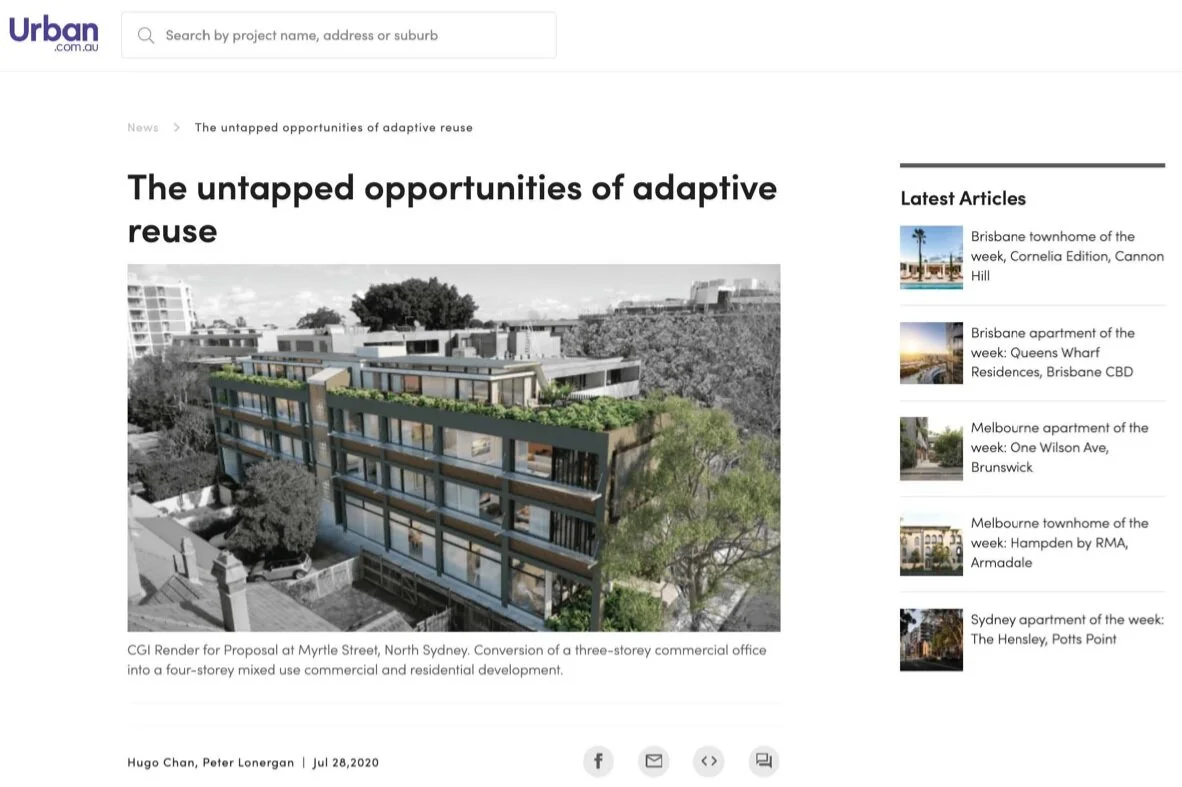Co-written with Peter Lonergan, this article responds to the Bulletin’s theme of ‘What are we doing?’ by examining how we respond, recover and rebuild after the bushfire and how we can work towards a more resilient, climate adaptive future.
Read MoreIn a time of climate crisis, this article how do you begin to remould an industry whose entire structure has become so embedded within systems of capital? It looks towards recent decisions of the NSW Land & Environment Court and the embedding of ESD principles as one avenue architects may look towards shifting the current cradle to grave construction mindset.
Read MoreA quick fire response to the NSW Treasurer's 'tongue-in-cheek' article on ten buildings he'd like to demolish. This article argues that the desire for demolition remains within the traditional 'cradle-to-grave' model of thinking, in a time when we should be focusing on recycling and reuse to push for a circular approach to construction.
Read MoreAn article co-authored with Peter Lonergan (Director, Cracknell & Lonergan), unpackaging the NSW Planning System and the hidden opportunities for re-developing sites and the incentives associated with adaptation rather than building anew to achieve a more sustainable design outcome.
Read MoreThe resource intensive cycle of demolition and construction seems endless, but in this article, I argue that through adaptive reuse we can imagine a more sustainable approach.
Read MoreReflecting on the sustainable lessons of adaptive reuse, this article argues that it is high time architects came to terms with addressing the inevitability of change inherent in all buildings and begin to think about the ways we should try to re-consider and re-use the buildings already built.
Read MoreArchitecture Bulletin | V76, Iss.03, pp.28-29
Responding to the Bulletin’s theme of Climate Crisis, this article posits that architects must fundamentally rethink how cycles of demolition and construction operate within the build environment. It argues that it is far too easy to continually demolish and build anew and that adaptive reuse enables us to shift our thinking into a more sustainable and sensitive approach to our urban fabric.
It is anticipated that global populations living in urban areas is going to “increase by 84 per cent by 2050, from 3.4 billion in 2009 to 6.3 billion in 2050.” (United Nations, 2009). Indeed, since 2009, the population living in urban areas had surpassed the number living in rural areas. There is therefore the inevitable question of how these mega-cities of the future can sustainably feed these populations. In this article, I have decided to investigate how different designers and architectural practices have attempted to resolve this issue at a variety of household, communal and urban scales.
Read MoreArchitecture is often seen as an artistic pursuit, with magazine spreads posting glossy photos of delicate designs in wealthy suburbs for a star-studded, affluent clientele. Alternatively, the so-called drivers of sustainable architecture often works within the confines of major corporations or large government entities, seeing green architecture as a means of rebranding and generating the image of sustainability. What we often forget and ignore are those less fortunate in society, people who are arguably in greater need of sustainable livelihoods than those in our urban environments.
Read MoreNot unlike one of my early posts in March (Tear it Apart), I was once again struck by the apparent waste and visual destruction at another construction site near my home in Kensington. This however was very visually different, for two terrace houses stood, hollowed out but nonetheless appeared to be retained in the future low-rise apartment complex known as The Stables.
Read MoreIt is I suppose becoming obvious that one of my sensibilities toward sustainability resides in an interest with restoration, adaptation and reuse. In my most recent posts, (With Age Comes Wisdom 20 May 2014, Declining Detroit 13 May 2014, Revisiting ‘Green’ Architecture 11 May 2014), I have investigated some of the issues of retaining old structures, as well as the virtues and energy savings in doing so. But today I have found further evidence to support this case. Nordic architectural firm, Snohetta has arguably moved to the forefront of sustainable development, having now completed the renovations “to transform an ordinary office building into a building that produces more energy than it consumes.” (Powerhouse, 2014).
Read MoreOriginally envisioned by Le Corbusier as the solution to equality, modernity and urbanism, the radial city provided the individual with autonomy, via the automobile (Merin, 2013). The vision became misinterpreted as the independent home, the separation between the urban commercial heart and a radial suburban household and led to the disaster we now recognise as urban sprawl. One of the precipitates of this urban sprawl is what we now call the Urban Heat Island effect (UHI). Characterised as the result of our built environment absorbing heat during the day and dissipating it overnight, the Urban Heat Island has generated uncomfortable inner city environments as well as contributing to increased energy consumption for heating and cooling (USEPA, 2013).
Read More











